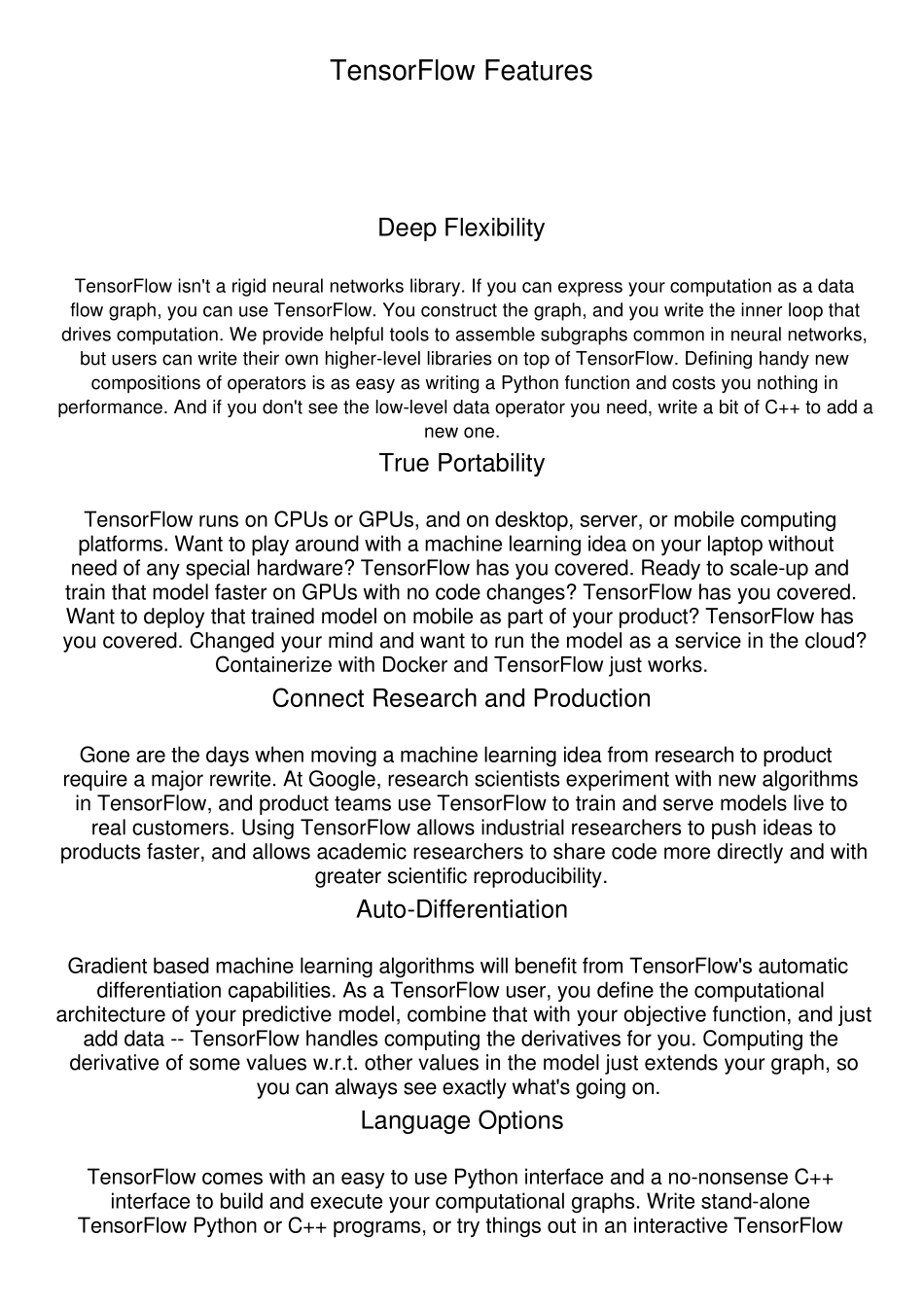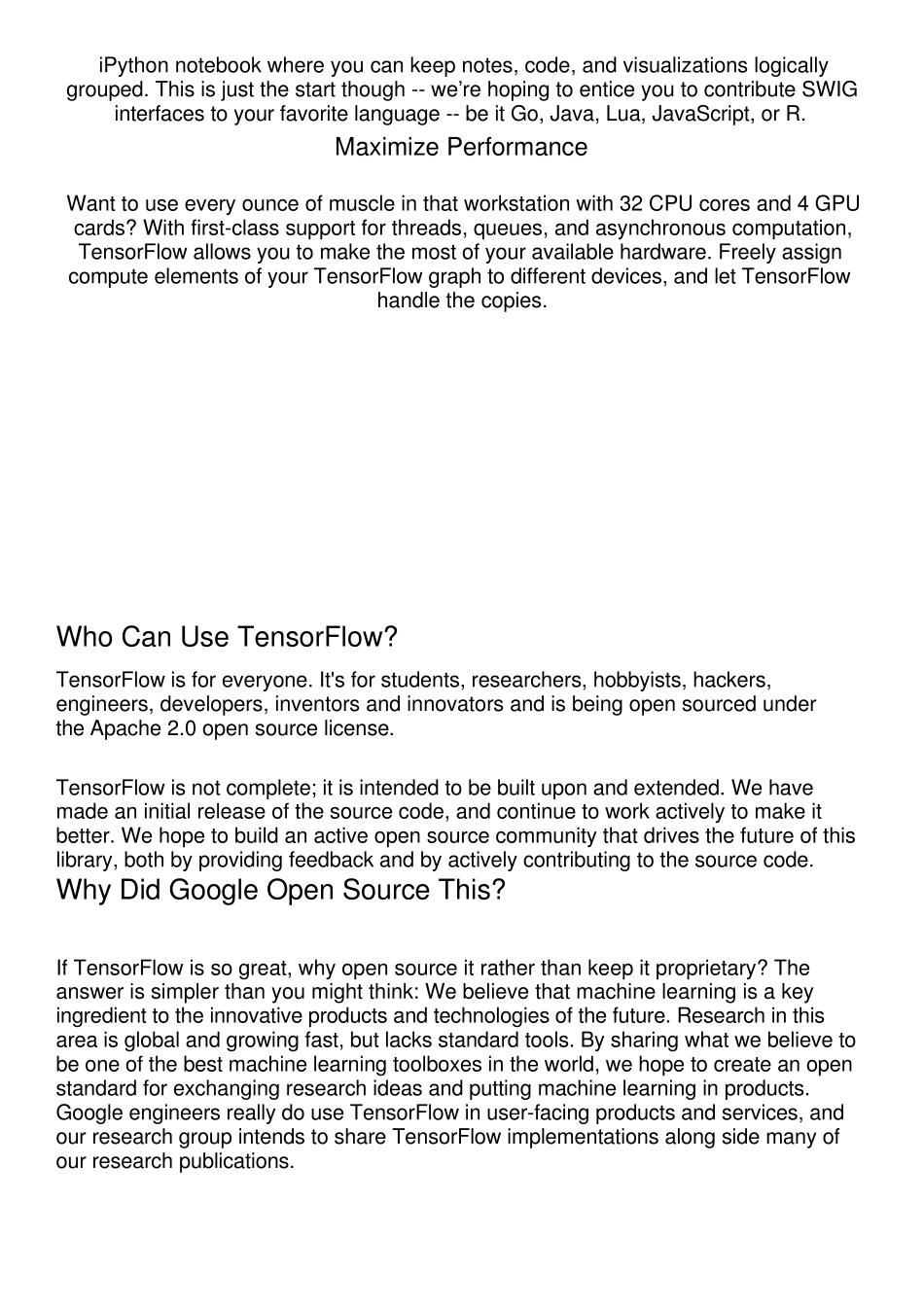About TensorFlow TensorFlow™ is an open source software library for numerical computation using data flow graphs. Nodes in the graph represent mathematical operations, while the graph edges represent the multidimensional data arrays (tensors) communicated between them. The flexible architecture allows you to deploy computation to one or more CPUs or GPUs in a desktop, server, or mobile device with a single API. TensorFlow was originally developed by researchers and engineers working on the Google Brain Team within Google's Machine Intelligence research organization for the purposes of conducting machine learning and deep neural networks research, but the system is general enough to be applicable in a wide variety of other domains as well. What is a Data Flow Graph? Data flow graphs describe mathematical computation with a directed graph of nodes & edges. Nodes typically implement mathematical operations, but can also represent endpoints to feed in data, push out results, or read/write persistent variables. Edges describe the input/output relationships between nodes. These data edges carry dynamically-sized multidimensional data arrays, or tensors. The flow of tensors through the graph is where TensorFlow gets its name. Nodes are assigned to computational devices and execute asynchronously and in parallel once all the tensors on their incoming edges becomes available. TensorFlow Features Deep Flexibility TensorFlow isn't a rigid neural networks library. If you can express your computation as a data flow graph, you can use TensorFlow. You construct the graph, and you write the inner loop that drives computation. We provide helpful tools to assemble subgraphs common in neural networks, but users can write their...


